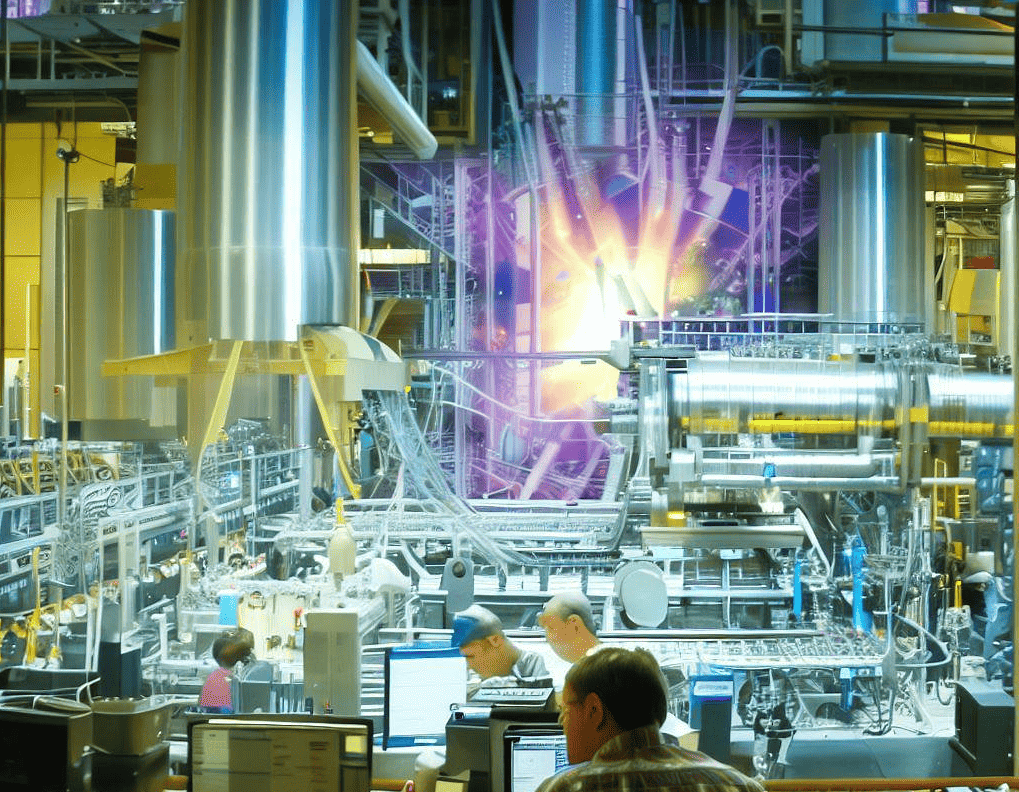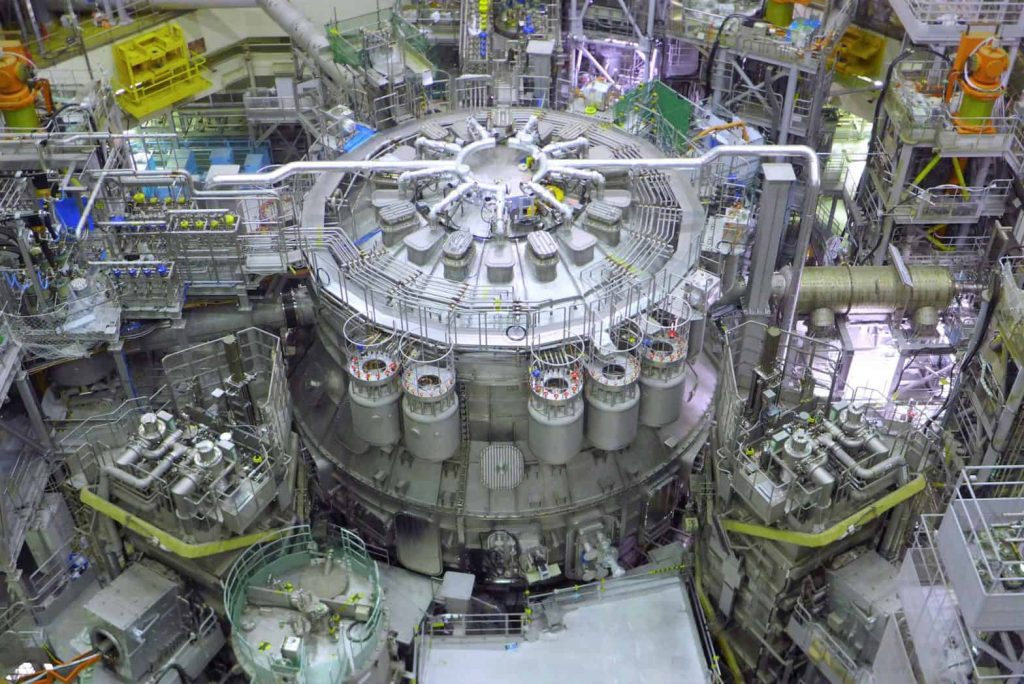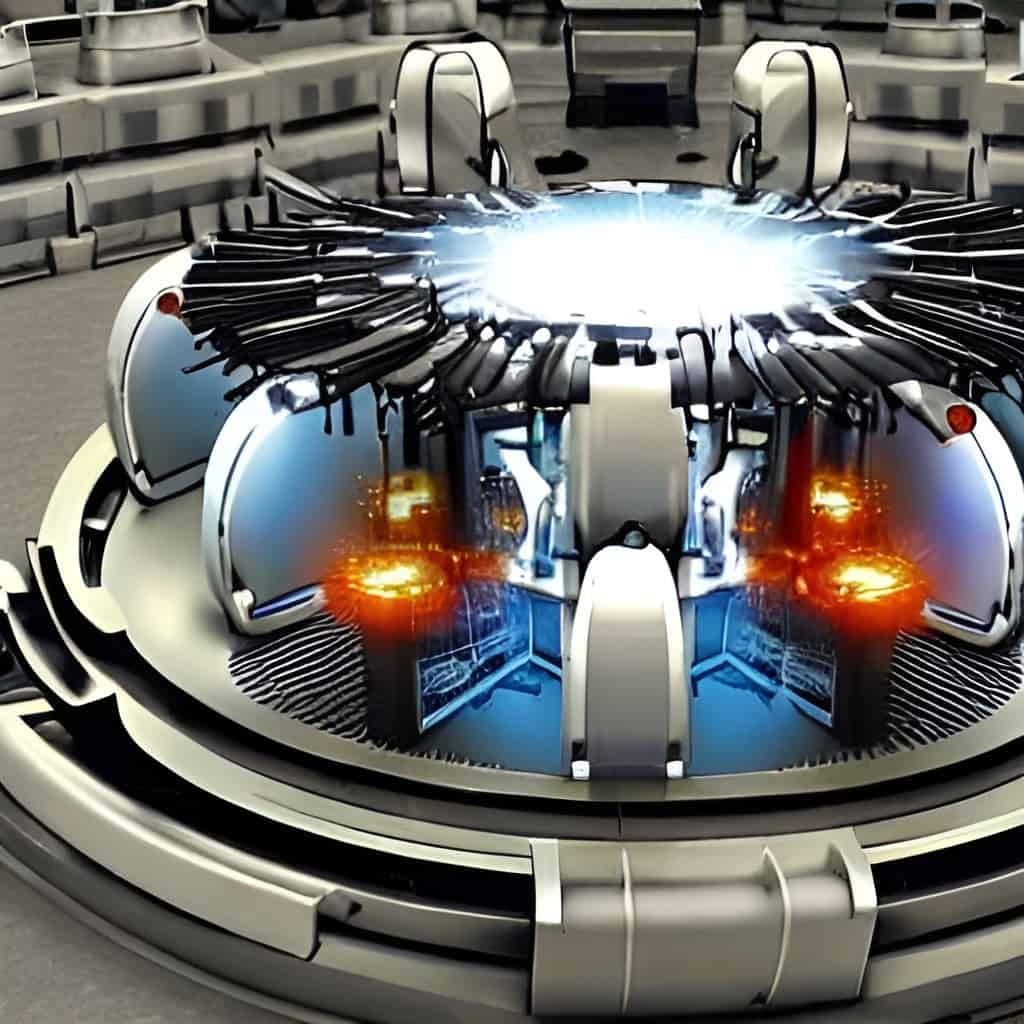An energy revolution may be on the horizon when Japan, in cooperation with the European Union, unveils the world’s largest experimental nuclear fusion reactor. With more than 500 experts and 70 participating companies, Naka’s six-storey tokamak project aims to harness the sun’s energy through a safe, carbon-free and efficient energy source. But we still have to be patient: it will take at least 25 years before we all reap the benefits.
- Japan, in cooperation with the European Union, launched the JT-60SA reactor, the world’s largest experimental nuclear fusion reactor.
- JT-60SA represents an important advance in the field of nuclear fusion and serves as the starting point for the International Thermonuclear Experimental Reactor (ITER).
- This project emphasizes the potential of nuclear fusion as an environmentally friendly energy source.
The reactor heats the plasma to a scorching temperature of 200 million degrees Celsius in search of the elusive net energy gain — a feat the United States achieved last year using a different method. The JT-60SA is a critical step towards sustainable fusion energy, promising a clean energy future without the risks of nuclear accidents or heavy radioactive waste.
The commissioning of the JT-60SA reactor at Naka is a testament to the spirit of scientific cooperation. It brings Hundreds of scientists and engineers plus the industrial might of dozens of companies.
Discussion of fusion versus fission
The differences between nuclear fusion and nuclear fission in terms of process and product are significant. Fusion, the process that powers the JT-60SA reactor, brings atomic nuclei together, mirroring the natural processes of stars. In contrast, nuclear fission, which fuels conventional nuclear reactors, splits the atomic nucleus. Fusion offers the allure of abundant energy with minimal waste, a stark contrast to the often controversial nuclear fission associated with catastrophic accidents such as Fukushima and Chernobyl.

The second spark: American scientists repeat a landmark achievement in the fusion ignition process
Once again, American scientists at Lawrence Livermore National Laboratory in California have made history by achieving a net energy gain in a fusion reaction.
A step towards completing ITER
The JT-60SA reactor is a precursor to the International Thermonuclear Experimental Reactor (ITER) in France. Despite the challenges ITER faces, such as budget overruns and delays, the advances and insights provided by JT-60SA are critical steps toward achieving net energy gains in fusion technology. This partnership could put consolidation at the forefront of the energy sector in the second half of this century.
EU Energy Commissioner Kadri Simson described the JT-60SA as “the world’s most advanced tokamak” and stressed its importance for the transition to… Clean energy sources. This international collaboration goes beyond technical achievements, with commitments to strengthening the JT-60SA International Fusion School and ensuring that the next generation of scientists and engineers carry the torch of fusion research. He can take over.
Take new paths
Meanwhile, researchers at Lawrence Livermore National Laboratory in the US have achieved net energy gains using a different fusion method, which uses high-energy lasers in a process known as inertial confinement. This pioneering success has been celebrated as a major leap forward, demonstrating that fusion can be a viable source of energy production.
The JT-60SA experiments are crucial not only for ITER, but also for the broader application of fusion energy. The research contributes to global knowledge about the use of fusion energy. This synergy between JT-60SA and ITER reflects global synergy sincerity To this transformative energy source.
The central role of Italy
Italy also played a key role in the success of the JT-60SA, investing €70 million and providing critical components and scientific coordination. This contribution underscores the country’s commitment to developing fusion technology as part of a broader carbon-free energy strategy. Marc Lachaise, Director, Fusion for Energy, Confirm The importance of the JT-60SA facility for fusion’s contribution to the decarbonized energy mix.
The participation of Italy and other European countries in the JT-60SA project is part of a larger pattern of international cooperation in fusion research. The RFX Consortium, under the mandate of the Italian National Research Council (CNR), has played an active role in developing protection systems for superconducting reactor coils.
The possibility of nuclear fusion
The promise of nuclear fusion goes beyond the technical realm and offers a beacon of hope in the fight against climate change. Fusion reactions do not produce carbon dioxide and produce much less radioactive waste than fission reactors. These environmental benefits, combined with the inherent safety of nuclear fusion reactions, position it as an attractive alternative to conventional energy sources.
Countries such as the United States, the United Kingdom, and China are also developing their own nuclear fusion programs and recognize the strategic and environmental necessity of developing this technology. The clear focus on Japan’s clean energy strategy reflects the urgent global need for decarbonization. The race for fusion energy is not only about scientific achievement, but also about geopolitics and environmental management.
The road to integration is long and full of technical and financial challenges. ITER’s activation date, tentatively set for 2025, remains uncertain due to the complex nature of the project and the massive investments it requires. The path to practical fusion energy, as demonstrated by JT-60SA, illustrates the potential and obstacles to turning this science fiction dream into reality.

“Lifelong entrepreneur. Total writer. Internet ninja. Analyst. Friendly music enthusiast.”












More Stories
iPhone SE 4: Bigger screen and Face ID according to new rumors
Belgian co-production with acclaimed actor Crispin Glover selected for Toronto Film Festival
Helldivers 2 Escalation of Freedom update will be released on August 6